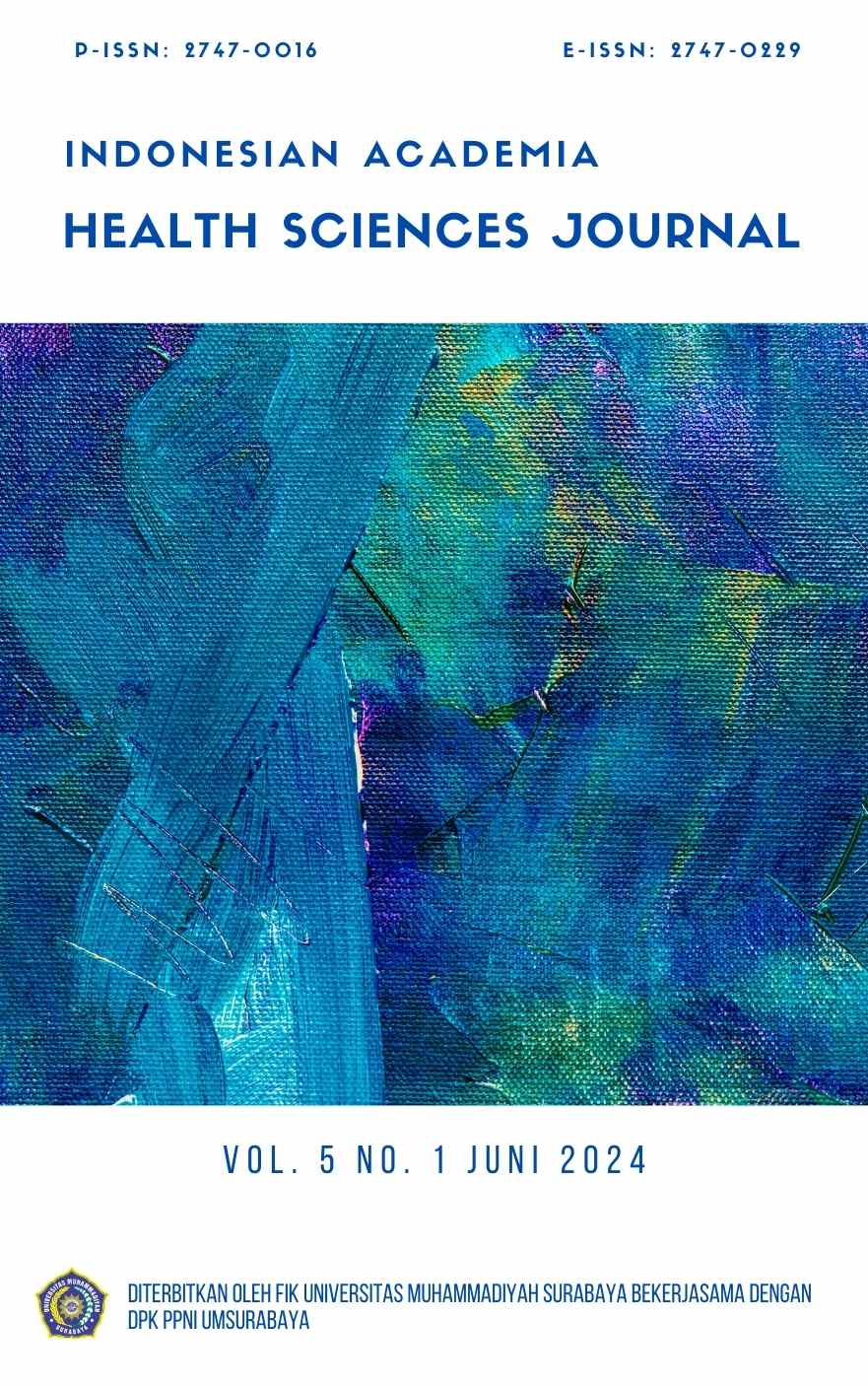Hubungan Quality of Nursing Work Life terhadap Kepatuhan Pendokumentasian Bundle Prevention Phlebitis
Abstract
Introduction: Incomplete documentation often occurs as a result of nurses' non-compliance in carrying out professional work, where documents should have completeness and accuracy in accordance with standard operating procedures in hospitals. The aim of this research is to analyze the relationship between quality of nursing work life (QNWL) and compliance with phlebitis prevention bundle documentation. Methods: Quantitative research with a cross sectional approach conducted in February 2024 at RSUD Ibnu Sina Gresik. The sample size was 148 respondents from 203 populations recruited using probability type cluster random sampling. The independent variable is QNWL and the dependent variable is compliance with phlebitis prevention bundle documentation. Correlation test using spearmen rho with SPSS version 22 software. Results: The research results showed that the QNWL of nurses was in the sufficient category at 75% and compliance with documentation of the pheblitis prevention bundle was mostly in the adequate category at 44.6%. The results of the correlation test show that there is a significant relationship, namely p-value 0.001 (p<0.05). The Correlation Coefficient value is 0.261, which means there is a strong correlation between QNWL and compliance with phlebitis prevention bundle documentation. Conclusion: This research provides the view that improving the quality of life of nurses' performance will increase nurses' compliance in carrying out phlebitis prevention bundle documentation.
Full text article
Authors
Copyright (c) 2024 Riski Dwi Prameswari, Dwi Ayu Angraini, Daviq Ayatulloh, Retno Twistiandayani

This work is licensed under a Creative Commons Attribution-NonCommercial-NoDerivatives 4.0 International License.

